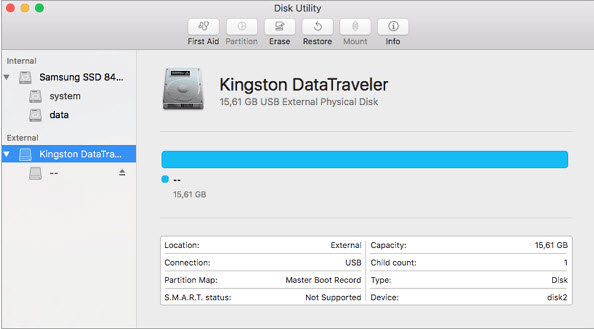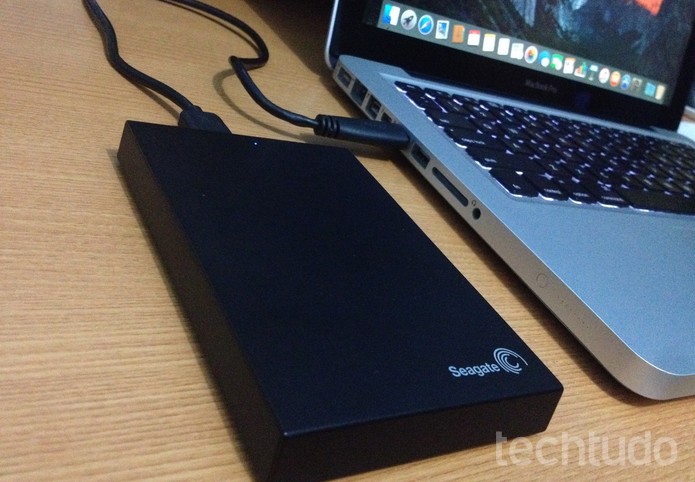

- #FORMAT YOUR USB DRIVE WITH FAT FOR MAC HOW TO#
- #FORMAT YOUR USB DRIVE WITH FAT FOR MAC FOR MAC#
- #FORMAT YOUR USB DRIVE WITH FAT FOR MAC MAC OS X#
- #FORMAT YOUR USB DRIVE WITH FAT FOR MAC PRO#
Recording and saving of cue points are disabled due to lack of free space on the USB Storage Device.

For details, see in the Instruction Manual. > Load music files in one of the supported formats. The format isn’t supported by the CDJ-3000. Music files that can’t be played with the unit are loaded. ■E-8304, E-8305 (Error type: UNSUPPORTED FILE FORMAT) If possible, re-import the music file to the location you're playing it from, e.g. > Check if the track can be played with another player that supports the same formats as the CDJ-3000. Track data (files) on the storage device can’t be read correctly. You now have a mac bootable USB drive that has a windows partition that is readable and writable by both macs and windows.Check the error code below and take the described measures. I like to do a Disk Utility repair on the HFS+ partition following the restore. Restore (using Disk Utility) your prebuilt minimal OSX to the HFS+ partition.ĥ. Is it possible because I formatted it in MS-DOS (FAT), my NTFS Windows. USB drive vendors tend to format their drives at the factory with FAT32.
#FORMAT YOUR USB DRIVE WITH FAT FOR MAC FOR MAC#
You are now back to having two partitions.Ĥ. To format your hard disk for Mac and Windows on Mac follow the steps below:-. If your drive is formatted in FAT32 or exFAT (the latter of which can handle larger capacity drives), you have your answer. Plug the drive into a Mac, fire up Disk Utility, click on the USB drive, select partition tab, select the xxx partition and press the "delete" key. Plug the drive into the windows machine and agree to it formatting the drive (200 MB only for some reason) and label it something odd (I use xxx)ģ. Open Applications > Utilities > Disk Utility. Connect the USB device to your Mac or MacBook. Back up the USB device before proceeding with this process. Use the following steps to use your Mac to format a USB drive to FAT32.

#FORMAT YOUR USB DRIVE WITH FAT FOR MAC HOW TO#
Partition the USB drive with GUID partition table first partition Fat32 (or exFat) and the second HFS+ (8GB minimum to fit OSX)Ģ. How to format a USB drive to FAT32 on a Mac. Here's the deal.Įquipment: a USB drive of 16 GB larger (try to find one that is fast too), a drive or partition with a minimal OSX build or your liking (10.6.7 for me was 7.2 GB), a running mac, a windows (virtual) machine (I used parallels 5 with Windows 7)ġ. I finally got it done and I don't know why it works, but it does. Two partitions one bootable mac partition and one that can be read and written by both macs and windows machines. When you need to format your USB to FAT/FAT16 because your device (like DVD player or digital decoder etc).

I did not test this with a hard drive, with a different bus than USB, or under Windows Vista, but I assume these cases follow the same behavior. Step 1: Why There Is No FAT Option on Format Window.
#FORMAT YOUR USB DRIVE WITH FAT FOR MAC PRO#
I tested this with a USB flash drive under Windows 7 Pro and under XP Pro, and both only recognized the FAT32 volume when it was the first one. If you set the HFS+ partition as the first one, Windows won't be able to see the FAT32 partition and will tell you that the disk has to be formatted. To be able to use it under Windows, you also have to make sure the partitioning scheme is set to Master Boot Record (MBR).
#FORMAT YOUR USB DRIVE WITH FAT FOR MAC MAC OS X#
If you ever want to divide a drive into two partitions, one formatted as Mac OS Extended (HFS+) and the other as FAT32, and to be able to access the FAT32 partition from Mac OS X and Windows, just make sure you set the FAT32 partition as the first one on the drive when you partition it with Disk Utility. This may be evident to some people, but I was a little surprised that my first attempt at it failed.


 0 kommentar(er)
0 kommentar(er)
